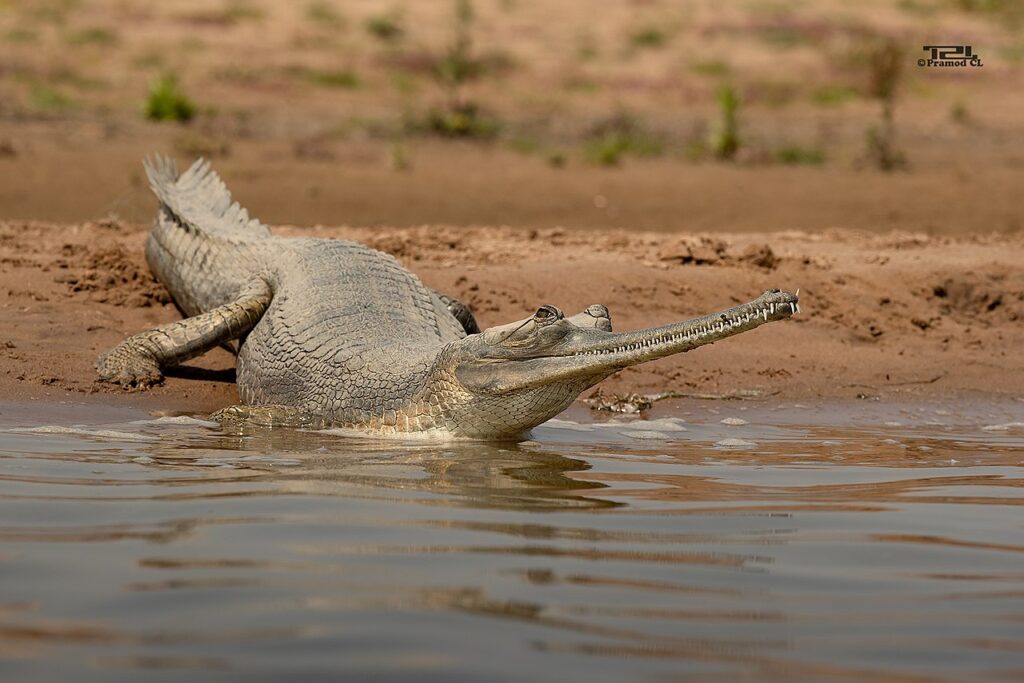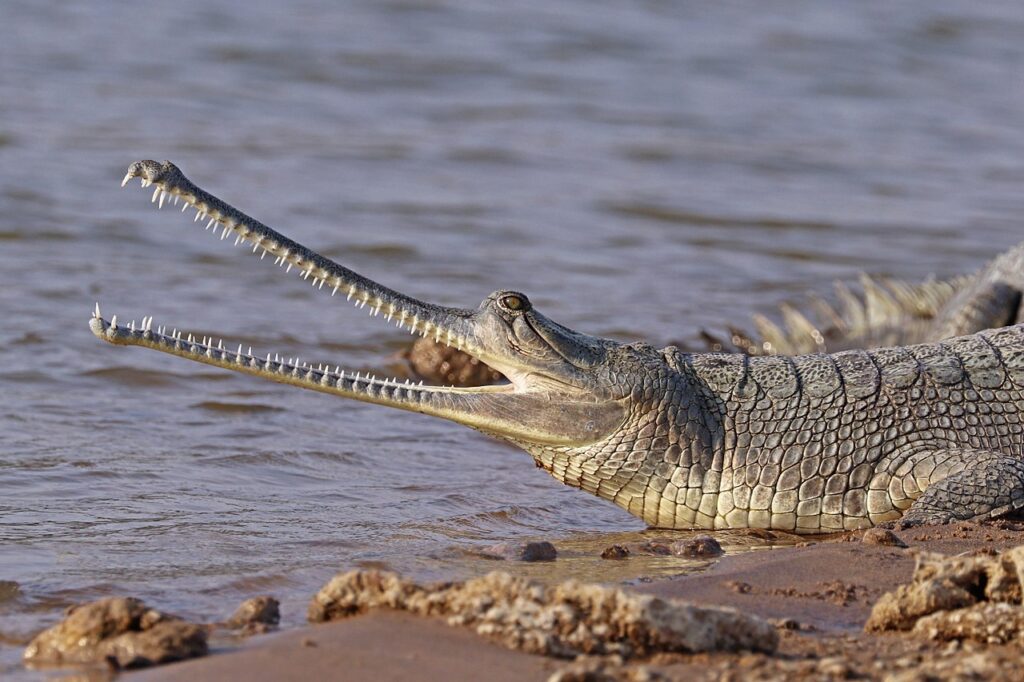The gharial, also known as the gavial, is a species of crocodile found in the rivers of India, Nepal, and Bhutan. This long-snouted predator has been a part of India’s cultural heritage for centuries. However, its population has declined drastically in recent years. In fact, gharials are considered one of the world’s most critically endangered species and is in dire need of conservation.
Habitat loss is a primary reason for the decline of gharial populations is habitat loss. For example, the construction of dams, irrigation canals, and other human activities have altered the river systems that gharials depend on for survival. The loss of their habitat has also reduced the availability of food for the gharials, causing them to become malnourished and vulnerable to diseases.
In response to the decline of gharial populations, the Indian government has launched several conservation efforts aimed at protecting the species. Here are a few notable initiatives.

What are some conservation intiatives?
The Gharial Conservation Breeding Program
This program was launched in the 1970s in response to the rapid decline of gharial populations in India. Since inception, the program has established breeding centers for gharials in various parts of the country, where the species could breed and increase their numbers in a safe environment. Furthermore, this program has been instrumental in helping to stabilize gharial populations and increase the numbers of this species.
The National Gharial Conservation and Management Plan
The plan was developed by the Indian government in collaboration with conservation organizations and wildlife experts. It outlines a comprehensive strategy for gharial conservation and management in India, including measures to protect gharial habitats, reduce threats to the species, and promote public awareness about gharial conservation.
Community-based Conservation Initiatives
Several conservation organizations have launched community-based initiatives to engage local communities in gharial conservation efforts. These initiatives involve the participation of local communities in gharial monitoring, habitat restoration, and public education campaigns. The goal of these initiatives is to increase community support for gharial conservation.
Habitat Restoration Programs
The Indian government and conservation organizations have also launched programs to restore degraded gharial habitats. These programs involve the removal of man-made structures that are damaging to the river habitats. The programs are also aimed at the introduction of native vegetation, and the improvement of water quality.
The government is also working to educate the public about the importance of gharial conservation. Some outreach intiatives include, public awareness campaigns, educational programs for schoolchildren, and community-based conservation initiatives. The goal of these efforts is to increase public understanding and support for gharial conservation.
Poaching continues to threaten India’s Gharials
However, despite the efforts of the Indian government and conservation organizations, the gharial continues to face numerous threats to its survival. The illegal trade of gharial eggs and skin for use in traditional medicine and luxury goods is a major issue that needs to be addressed. Poaching and accidental capture in fishing gear also pose a threat to gharials.
Poaching poses a serious threat, particularly in the National Chambal River Sanctuary, a crucial refuge for the species. Fishing depletes the population of prey, and gharials that get caught in nets swiftly perish. Fishermen have no regrets as they see them as competitors. Many riverbanks are occupied by farmers who produce cucumbers there during certain seasons. Sand Minining also is a major cause of habitat loss. Either eliminates Gharial nesting and sunbathing areas. Gharials won’t use the vast, shallow areas created by river water theft for irrigation. Longlines with up to 1000 fishhooks are used by turtle poachers to trap baby Gharials.
In order to fully protect the gharial, it is important implement effective measures to stop the illegal trade. The Indian government should work closely with law enforcement agencies to crack down on illegal poaching operations. The Gharial Conservation Alliance was formed to deal with these problems.

The Gharial Conservation Alliance
The Gharial Conservation Alliance (GCA) is an international group of people from various fields who are committed to protecting gharials from extinction. The GCA’s conservation initiatives include captive breeding and wild restocking operations. Other initiatives include scientific population surveys, public awareness campaigns, and government lobbying. Through public outreach, and fundraising efforts, a number of zoos have emerged as key participants in the protection of gharials.
They have repeatedly reinforced the importance of promoting sustainable fishing practices. By working with local communities and educating them about the importance of gharial conservation, we can help reduce the threat of accidental capture and reduce the pressure on gharial populations.
The Way Forward for Gharials
It is of the utmost importance to continue funding and supporting gharial conservation efforts in India. This includes the continued operation of gharial breeding centers, habitat restoration programs, and public education campaigns. By investing in the future of the gharial, we can help ensure that this species has a future in India and that future generations will be able to appreciate its beauty and importance.
The future of the gharial in India is uncertain, but with continued conservation efforts, there is hope that this species can be saved from extinction. It is important to remember that the gharial is not just a species in need of protection. it is also an important part of India’s cultural heritage.
In conclusion, the gharial is a critically endangered species that requires immediate conservation efforts to protect it from extinction. The Indian government, in collaboration with local communities and conservation organizations, is taking important steps to conserve the gharial and its habitats. By increasing public awareness and support for gharial conservation, we can help ensure that this species has a future in India.
Written by: Arshyaan Shahid
Help us Help Them! Think Wildlife Foundation is a non profit organization with various conservation initiatives. Our most prominent campaign is our Caring for Pari intiative. Pari is a rehabilitated elephant at the Wildlife SoS Hospital. 25% of the profits from our store are donated to the elephant hospital for Pari. Other than buying our wonderful merchandise, you could donate directly to our Caring For Pari fundraiser.
